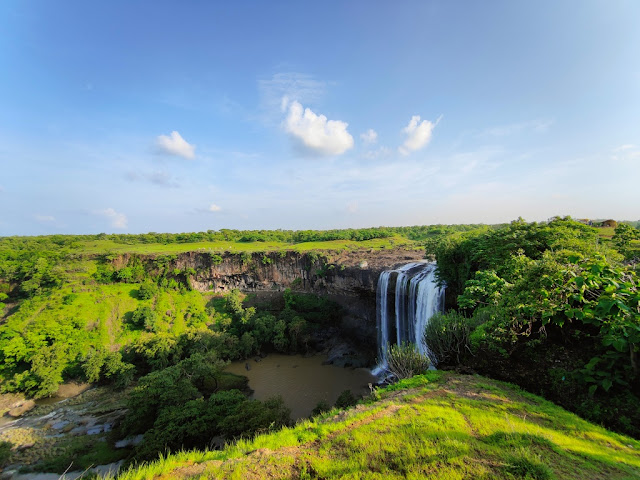Panna Tiger Reserve – History
Panna National Park was created in 1981. The National Park consists of areas from the
former Gangau Wildlife Sanctuary created in 1975. This sanctuary comprised of
territorial forests of the present North and South Panna Forest Division to
which a portion of the adjoining Chhatarpur forest division was added later.
The reserved forests of the Park in Panna district and some protected forests
on Chhatarpur side were the hunting preserves of the erstwhile
rulers of Panna, Chhatarpur and Bijawar princely states in the past.
Panna National Park was declared as one of the Tiger reserves in India in 1994 and
placed under the protection of Project Tiger. Panna was given the Award of
Excellence in 2007 as the best maintained national park of India by
the Ministry of Tourism of India. It is notable that by 2009, the
entire tiger population had been eliminated by poaching with the
collusion of forest department officials. Two female tigers were relocated
from Bandhavgarh National Park and Kanha National Park to Panna National Park in March 2009.
It was
officially announced in June 2009 that the reserve, which had over 40 tigers
six years earlier, had no tigers left and only two tigresses, which were
brought in a little earlier. The entire tiger population of the reserve was
considered eliminated in February 2012. The Ministry of Environment and
Forests (MoEF) approved a proposal to translocate two tigers and two
tigresses to the reserve. One female each from Bandhavgarh National
Park (coded T1) and Kanha National Park (T2) were translocated
to Panna Tiger Reserve.
A tiger
male, coded T3, was brought from Pench Tiger Reserve but strayed out
of the park shortly thereafter, in November 2009. The tiger started
walking towards its home in Pench National Park, indicating a homing instinct.
It moved steadily through human dominated landscape without causing any
conflict. Forest department staff tracked it continuously for over a month and
finally brought it back to the Panna Tiger Reserve. It then settled well,
established territory, and started mating.
The
tigress, T1, translocated from Bandhavgarh National Park, gave birth to
four cubs in April 2010 of which 2 survive till date. The second tigress,
T2, translocated from Kanha National Park gave birth to four cubs
several months later and all four survive till date. A third tigress,
coded T4, an orphaned cub was reintroduced to Panna in March 2011. She
learnt hunting skills with the help of the male and mated with him. She was
found dead on 19 September 2014 of an infection caused by its radio
collar. Her sister T5 was released in Panna in November 2011. The Panna
Biosphere Reserve was designated in 2020 by UNESCO.
Effect of Ken Betwa River Linking Project:
The Government
of India along with Government of Madhya Pradesh and Government of
Uttar Pradesh have planned to link the Ken River with Betwa
River. This involves construction of 283m long Daudhan Dam. The project
aims to transfer excess water from the Ken basin to Betwa basin thus provide
water access to the drought prone region of Bundelkhand. This construction
will cause inundation of 400 hectares of land of 4300-hectare Panna Tiger reserve. Environmentalists are afraid that this will adversely affect the
population of tigers in the region.






















.jpg)
.jpg)











.jpg)







.jpg)
